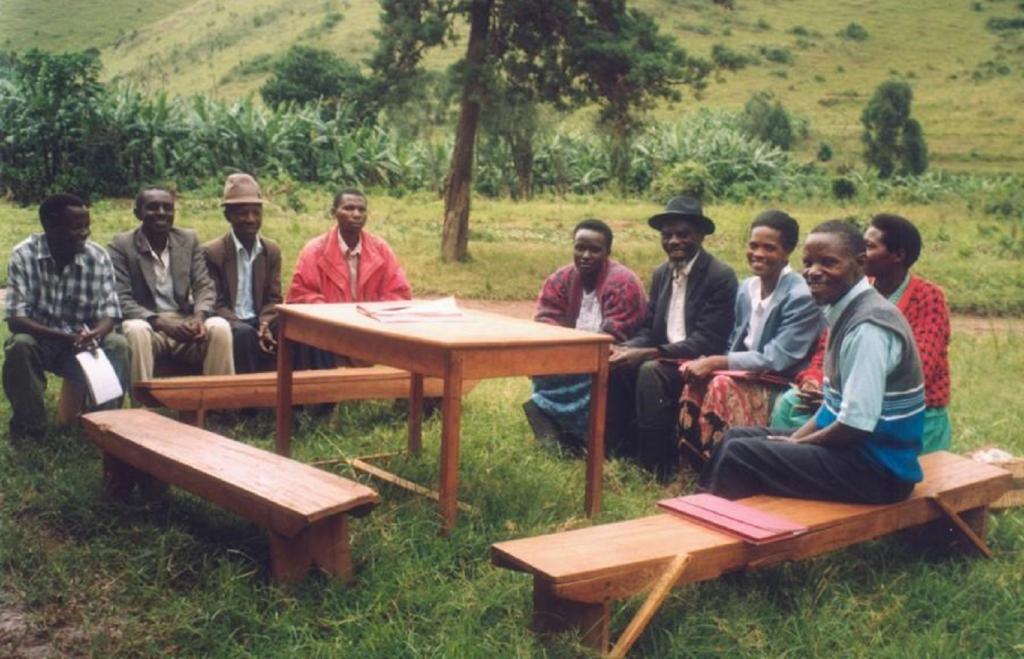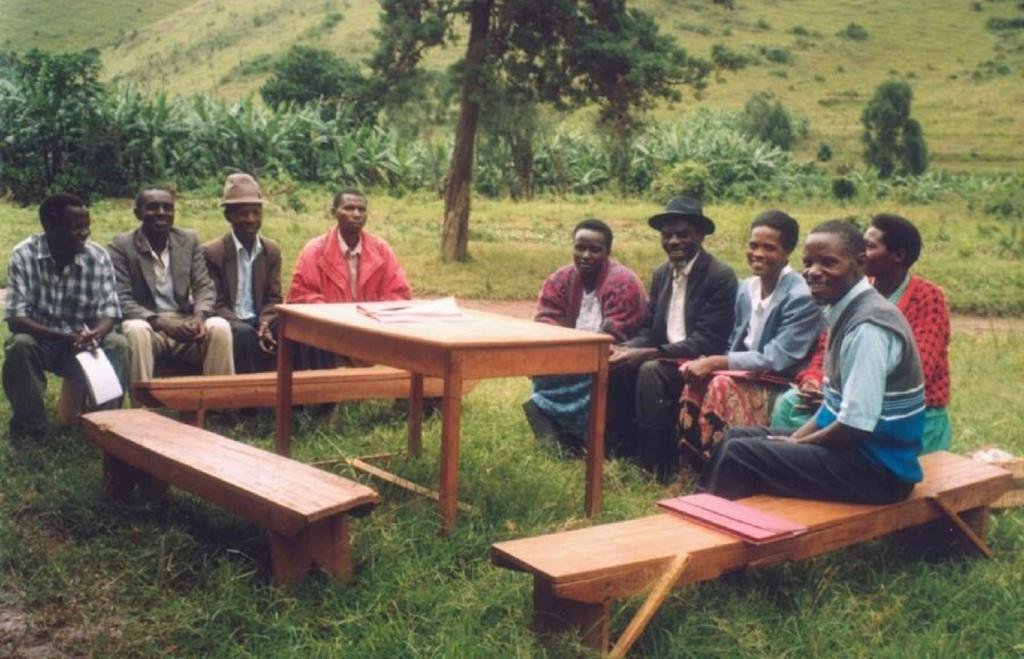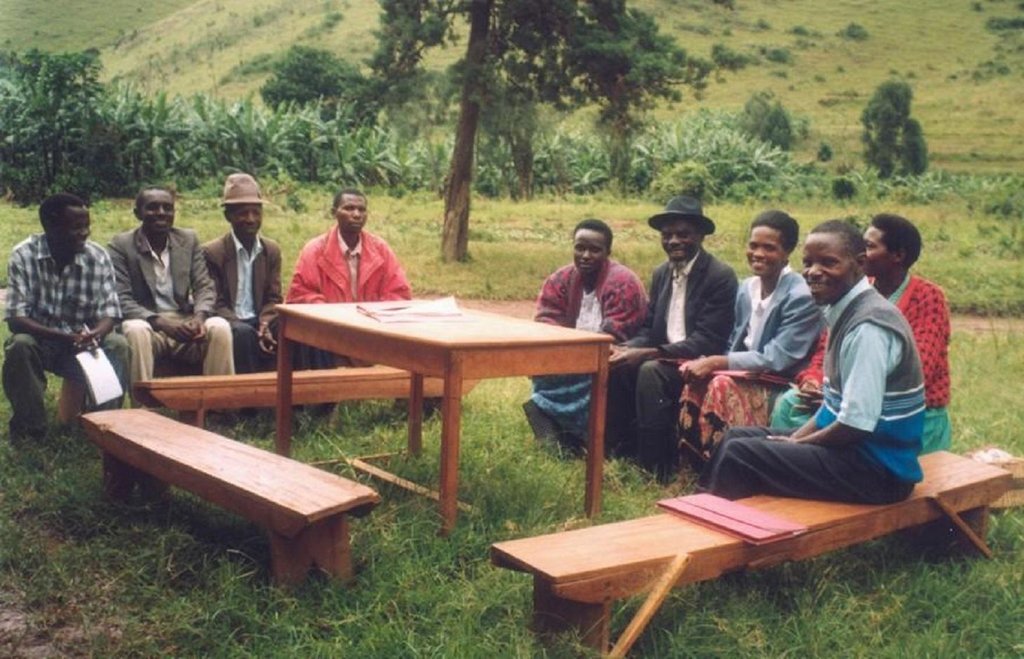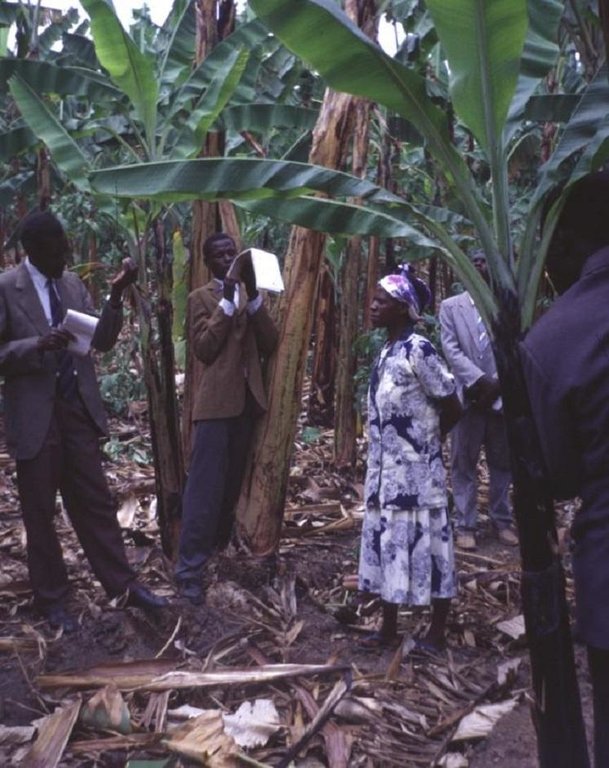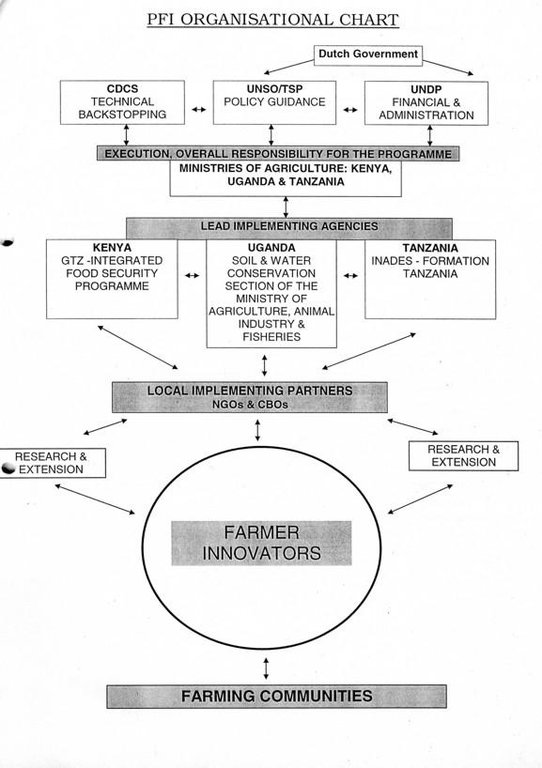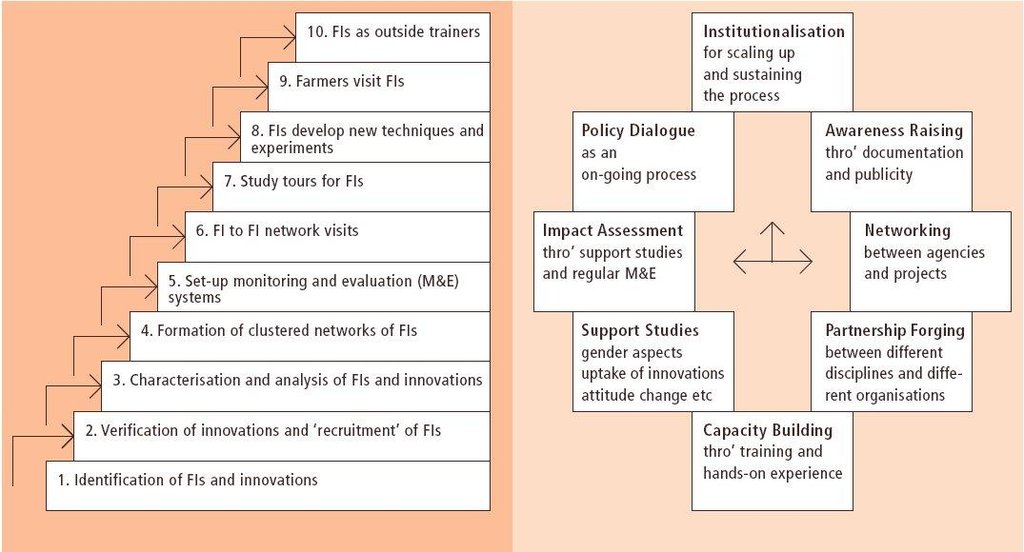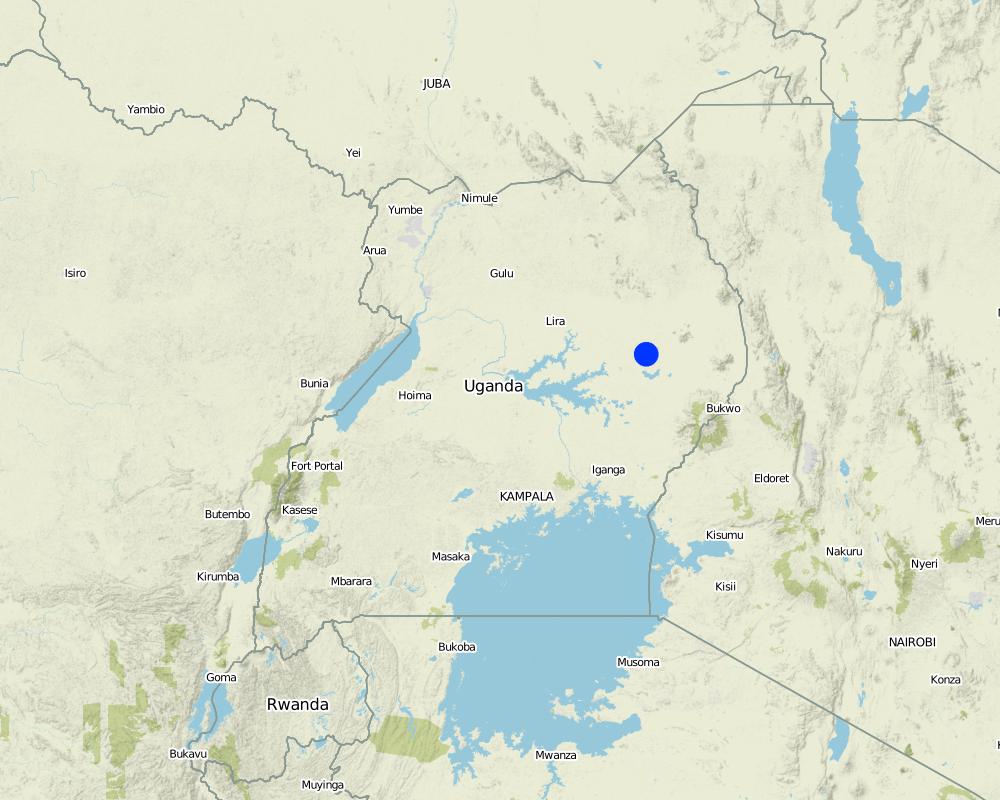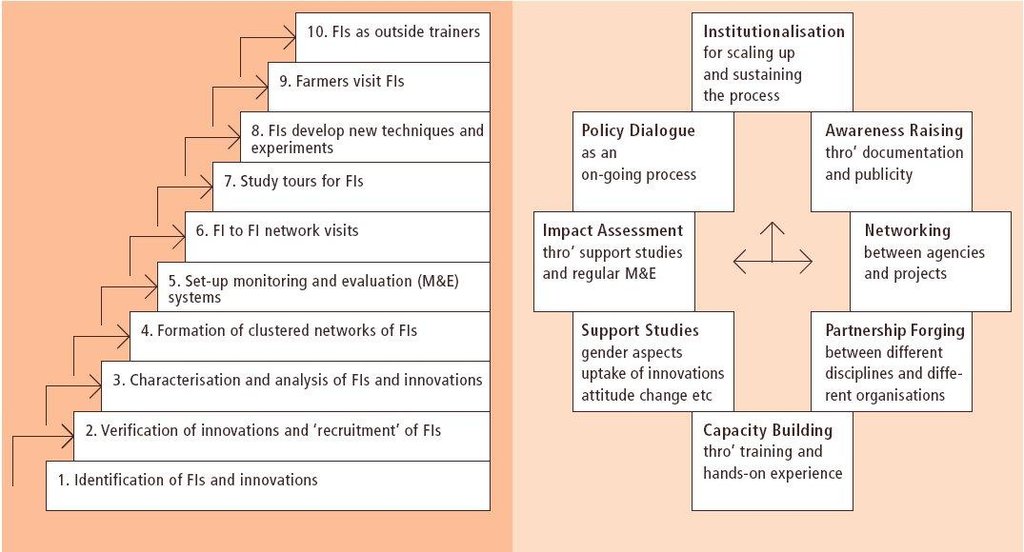Promoting farmer innovation [ยูกันดา]
- ผู้สร้างสรรค์:
- การอัพเดท:
- ผู้รวบรวม: Kithinji Mutunga
- ผู้เรียบเรียง: –
- ผู้ตรวจสอบ: Fabian Ottiger
approaches_2418 - ยูกันดา
ดูส่วนย่อย
ขยายทั้งหมด ย่อทั้งหมด1. ข้อมูลทั่วไป
1.2 รายละเอียดที่ติดต่อได้ของผู้รวบรวมและองค์กรที่เกี่ยวข้องในการประเมินและการจัดเตรียมทำเอกสารของแนวทาง
ผู้เชี่ยวชาญ SLM:
ชื่อของโครงการซึ่งอำนวยความสะดวกในการทำเอกสารหรือการประเมินแนวทาง (ถ้าเกี่ยวข้อง)
Food and Agriculture Organization of the United Nations (FAO) - อิตาลีชื่อของโครงการซึ่งอำนวยความสะดวกในการทำเอกสารหรือการประเมินแนวทาง (ถ้าเกี่ยวข้อง)
CIS-Centre for International Cooperation (CIS-Centre for International Cooperation) - เนเธอร์แลนด์ชื่อของโครงการซึ่งอำนวยความสะดวกในการทำเอกสารหรือการประเมินแนวทาง (ถ้าเกี่ยวข้อง)
Ministry of Agriculture and Livestock Development of Kenya (MoA) - เคนยา1.3 เงื่อนไขที่เกี่ยวข้องกับการใช้ข้อมูลที่ได้บันทึกไว้ผ่านทาง WOCAT
ผู้รวบรวมและวิทยากรหลักยอมรับเงื่อนไขเกี่ยวกับการใช้ข้อมูลที่ถูกบันทึกผ่านทาง WOCAT:
ใช่
1.4 การอ้างอิงถึงแบบสอบถามเรื่องเทคโนโลยี SLM
2. คำอธิบายของแนวทาง SLM
2.1 การอธิบายแบบสั้น ๆ ของแนวทาง
Identification of farmer innovators in SWC and water harvesting, and using them as focal points for visits from other farmers to spread the practices and stimulate the process of innovation.
2.2 การอธิบายอย่างละเอียดของแนวทาง
การอธิบายอย่างละเอียดของแนวทาง:
Aims / objectives: The Promoting Farmer Innovation (PFI) approach seeks to build on technical initiatives - innovations in the local context - developed by farmers themselves in dry/marginal areas where the conventional approach of transfer of technology from research to extension agents, and then on to farmers, has so often failed. The approach basically comprises identifying, validating and documenting local innovations/initiatives. Simple monitoring and evaluation systems are set up amongst those innovative farmers who are willing to co-operate. Through contact with researchers, extra value is added to these techniques where possible. Farmer innovators are brought together to share ideas. Finally, best-bet technologies, in other words those that are considered to be good enough to be shared, are disseminated through farmer-to-farmer extension. This takes two forms. First, farmers are brought to visit the innovators in their farms. Secondly farmer innovators are used as teachers/trainers to visit groups of farmers - including FAOs farmer field schools in some cases. Only in this second form of extension is an allowance payable to the innovator. A ten-step field activity methodology has been developed.
Methods: At programme level, there is capacity building of in-line extension and research staff, who are the main outside actors in the programme. In each of the countries the project has been implemented through a government ministry, which partners various NGOs in the field. The principle, and practice, is not to create separate project enclaves, but to work through existing personnel, sharing buildings and vehicles that are already operational in the area. A programme development process methodological framework shows how the ultimate goal of institutionalisation can be achieved. PFIs first phase, completed in 2000, was financed by the Government of The Netherlands, through UNDP, and was active in Kenya, Tanzania and Uganda.
2.3 รูปภาพของแนวทาง
2.5 ประเทศ ภูมิภาค หรือสถานที่ตั้งที่ได้นำแนวทางไปใช้
ประเทศ:
ยูกันดา
ภูมิภาค/รัฐ/จังหวัด: :
East Africa (parts of Kenya, Tanzania and Uganda)
Map
×2.6 วันที่เริ่มต้นและสิ้นสุดของแนวทาง
ระบุปีที่เริ่ม:
1996
การสิ้นสุดลง (ถ้าแนวทางไม่ได้ใช้อีกต่อไป):
2000
2.7 ประเภทของแนวทาง
- ใช้โครงงานหรือแผนงานเป็นฐาน
2.8 เป้าหมายหรือวัตถุประสงค์หลักของแนวทาง
The Approach focused mainly on SLM with other activities (Better land husbandry practices (eg composting, crop selection))
Improve rural livelihoods through an increase in the rate of diffusion of appropriate SWC/water harvesting technologies based on farmer innovation, and through farmer-to-farmer exchange visits. At a higher level: to demonstrate the effectiveness of such an approach so that it can be institutionalised.
The SLM Approach addressed the following problems: - poor supply of relevant recommendations from research for small scale farmers in marginal areas - poor delivery of SWC technologies (where they exist) to farmers - lack of motivation of research and extension staff - isolation of promising ???innovative??? SWC/water harvesting ideas which address low crop yields, land degradation and poverty - lack of exchange of this knowledge
2.9 เงื่อนไขที่เอื้ออำนวยหรือเป็นอุปสรรคต่อการนำเทคโนโลยีภายใต้แนวทางนี้ไปปฏิบัติใช้
บรรทัดฐานและค่านิยมทางสังคม วัฒนธรรม ศาสนา
- เป็นอุปสรรค
Favoured farmer syndrome: where too much attention is given to particular innovative farmers and jealousy is aroused in others
Treatment through the SLM Approach: Avoid working with innovators who are so exceptional that they are outside society and others cannot relate to them. Rotate the farmers who are used as learning points: in other words once another farmer has adopted the technology, use him or her as the focal point.
การมีไว้ให้หรือการเข้าถึงแหล่งการเงินและบริการ
- เป็นอุปสรรค
Danger of identifying innovations that are good technically but too expensive for ordinary farmers to implement.
Treatment through the SLM Approach: Linked to point (1) above: beware of farmers who are too exceptional/too rich.
การจัดตั้งระดับองค์กร
- เป็นอุปสรรค
Lack of motivation of research and extension institutions
Treatment through the SLM Approach: Bringing them together with farmer innovatiors
กรอบแนวทางในการดำเนินการด้านกฎหมาย (การถือครองที่ดิน สิทธิในการใช้ที่ดินและน้ำ)
- เป็นอุปสรรค
Who gets the credit for the particular innovation?
Treatment through the SLM Approach: Important to make sure that an innovation is traced back within the locality to its roots, identifying the 'owner'. Especially important when a name is attached to an innovation.
The existing land ownership, land use rights / water rights hindered a little the approach implementation Farmers will only invest time and effort in innovation when they have secure land use rights (though not necessarily ownership), which is the case in all the areas where PFI has been operational. Access to land for women was a problem which inhibits women innovating.
อื่นๆ
- เป็นอุปสรรค
Cultural: Gender imbalance in identification of innovators: women overlooked
Treatment through the SLM Approach: Gender sensitisation and training: bring together the identifiers with the farmers - male and female.
3. การมีส่วนร่วมและบทบาทของผู้มีส่วนได้ส่วนเสียที่เกี่ยวข้อง
3.1 ผู้มีส่วนได้ส่วนเสียที่เกี่ยวข้องในแนวทางนี้และบทบาท
- ผู้ใช้ที่ดินระดับท้องถิ่นหรือชุมชนระดับท้องถิ่น
- ผู้เชี่ยวชาญ SLM หรือที่ปรึกษาการเกษตร
- องค์กรพัฒนาเอกชน
All involved et different levels: after implementation mainly government and NGO
- รัฐบาลแห่งชาติ (ผู้วางแผน ผู้ทำการตัดสินใจ)
All involved et different levels: after implementation mainly government and NGO
- องค์การระหว่างประเทศ
All involved et different levels: after implementation mainly government and NGO
ถ้ามีผู้มีส่วนได้ส่วนเสียหลายคนที่เกี่ยวข้องให้ระบุหน่วยงานตัวแทน:
International specialists in collaboration with/after discussions with national specialists and land users
3.2 การเกี่ยวข้องของผู้ใช้ที่ดินระดับท้องถิ่นหรือชุมชนระดับท้องถิ่นในช่วงต่างๆของแนวทาง
| ความเกี่ยวข้องของผู้ใช้ที่ดินระดับท้องถิ่นหรือชุมชนระดับท้องถิ่น | ระบุผู้ที่มีส่วนเกี่ยวข้องและอธิบายกิจกรรม | |
|---|---|---|
| การริเริ่มหรือการจูงใจ | ไม่ลงมือ | public meetings, interviews/questionnaires, workshops/seminars, rapid/participatory rural appraisal; interviews/Participatory Rural Appraisals etc |
| การวางแผน | ไม่ลงมือ | rapid/participatory rural appraisal, interviews/questionnaires, public meetings, workshops/seminars; interviews/Participatory Rural Appraisals etc |
| การดำเนินการ | ปฏิสัมพันธ์ | Mainly: farmer-to-farmer exchange, responsibility for minor steps; partly: responsibility for major steps; interviews/Participatory Rural Appraisals etc |
| การติดตามตรวจสอบหรือการประเมินผล | ปฏิสัมพันธ์ | Mainly: public meetings, measurements/observations; partly: workshop/seminars; monitoring, using forms designed mainly by specialists |
| Research | ปฏิสัมพันธ์ | on-farm |
3.3 แผนผังแสดงขั้นตอนการทำงาน (ถ้ามี)
คำอธิบาย:
Farmer innovation methodology left: Field activities: the ten steps– from identification through to using innovators as trainers. (Critchley, 2000) right: Programme development processes: the framew
3.4 การตัดสินใจเลือกใช้เทคโนโลยี SLM
ระบุผู้ที่ทำการตัดสินใจเลือกเทคโนโลยีมากกว่าหนึ่งวิธีไปปฏิบัติใช้:
- ผู้ใช้ที่ดินเป็นผู้ตัดสินใจหลัก โดยการสนับสนุนจากผู้เชี่ยวชาญ SLM
การอธิบาย:
???Best -bet??? technologies chosen by extension agents/researchers based on the selection of innovative farmers??? technologies identified in the field - but the farmers choose (develop) which technology to implement.
Decisions on the method of implementing the SLM Technology were made by by land users* alone (self-initiative / bottom-up)
4. การสนับสนุนด้านเทคนิค การสร้างขีดความสามารถ และการจัดการด้านความรู้
4.1 การสร้างขีดความสามารถ / การอบรม
ได้มีการจัดอบรมให้แก่ผู้ใช้ที่ดินหรือผู้มีส่วนได้ส่วนเสียคนอื่น ๆ หรือไม่:
ใช่
ให้ระบุว่าใครเป็นผู้ได้รับการอบรม:
- ผู้ใช้ที่ดิน
- SWC specialists, extensionists/trainers
รูปแบบการอบรม:
- จัดการประชุมสู่สาธารณชน
- จัดคอร์ส
รูปแบบการอบรม:
- farm visits
หัวข้อที่พูด:
Staff seconded from Ministries of Agriculture/NGOs provide: (1) methodology training for participating staff (2) presentational skill training for farmer innovators and (3) training in gender aspects.
4.2 การบริการให้คำแนะนำ
ผู้ใช้ที่ดินมีการเข้าถึงการรับบริการให้คำปรึกษาหรือไม่:
ใช่
ระบุว่ามีบริการให้คำปรึกษาหรือไม่:
- ที่ศูนย์ถาวร
การอธิบาย/แสดงความคิดเห็น:
Name of method used for advisory service: Farmer innovator approach; Key elements: There are new roles for government/NGO extension staff under this methodology - as trainers and faci, Identify farmer innovators, form networks of farmer innovators, which meet, Bring farmers to se 'best bet' innovations; 1) Advisory service was carried out through: government's existing extension system, non-governmental agency; Extension staff: mainly government employees 3) Target groups for extension: land users
Advisory service is quite adequate to ensure the continuation of land conservation activities
4.3 การเสริมความแข็งแกร่งให้กับสถาบัน (การพัฒนาองค์กร)
สถาบันได้รับการจัดตั้งขึ้นมาหรือเสริมความแข็งแกร่งโดยแนวทางนี้หรือไม่:
- ใช่ ปานกลาง
ระบุระดับของสถาบันที่ได้รับการเสริมความแข็งแกร่งหรือจัดตั้งขึ้นมา:
- ท้องถิ่น
ระบุประเภทของการให้ความช่วยเหลือสนับสนุน:
- การสร้างขีดความสามารถ / การอบรม
ให้รายละเอียดเพิ่มเติม :
training (see also Annex A3)
4.4 การติดตามตรวจสอบและประเมินผล
การติดตามตรวจสอบและประเมินผลเป็นส่วนหนึ่งของแนวทางหรือไม่:
ใช่
ความคิดเห็น:
bio-physical aspects were regular monitored by 0 through observations; indicators: soils, moisture
technical aspects were regular monitored by 0 through observations; indicators: inputs
socio-cultural aspects were ad hoc monitored by 0 through measurements; indicators: number of men/women participating
economic / production aspects were regular monitored by 0 through observations; indicators: yields
area treated aspects were ad hoc monitored by 0 through observations; indicators: None
no. of land users involved aspects were ad hoc monitored by 0 through observations; indicators: None
There were few changes in the Approach as a result of monitoring and evaluation: Some changes, for example (a) increased numbers of women identified as innovators in response to gender sensitisation/training and (b) ???rotation??? of farmer innovators used for training - that is not using the same farmers all the time, as this can create envy. E.g. also better integration with government services/system for technical backstopping and extension
4.5 การวิจัย
การวิจัยเป็นส่วนหนึ่งของแนวทางหรือไม่:
ใช่
ระบุหัวข้อเรื่อง:
- เทคโนโลยี
- socio-economics
ให้ข้อมูลเพิ่มเติมและให้ระบุผู้ทำการวิจัย:
Theoretically, researchers should respond to the farmers??? research agenda, though this has proved difficult to achieve in practice. Apart from process monitoring of the methodology, which has led to improvements, technical research into the innovations has been relatively weak.
Research was carried out on-farm
5. การสนับสนุนด้านการเงินและวัสดุอุปกรณ์
5.1 ระบุงบประมาณประจำปีสำหรับแนวทาง SLM นี้
ถ้าหากว่างบประมาณประจำปีไม่เป็นที่ทราบแน่นอน ให้ระบุช่วงลงไป:
- 10,000-100,000
แสดงความคิดเห็น (แหล่งของการระดมทุน ผู้บริจาคคนสำคัญ):
Approach costs were met by the following donors: government (national government): 20.0%; international (International agency): 60.0%; local community / land user(s) (-): 20.0%
5.2 การสนับสนุนด้านการเงิน / วัสดุอุปกรณ์ให้แก่ผู้ใช้ที่ดิน
ผู้ใช้ที่ดินได้รับการสนับสนุนด้านการเงิน / วัสดุอุปกรณ์ไปปฏิบัติใช้เทคโนโลยีหรือไม่:
ไม่ใช่
5.3 เงินสนับสนุนสำหรับปัจจัยนำเข้า (รวมถึงแรงงาน)
ถ้าแรงงานโดยผู้ใช้ที่ดินเป็นปัจจัยนำเข้าที่มีอยู่มากมาย ระบุด้วยว่าเนื่องจาก:
- สมัครใจ
ความคิดเห็น:
done by the farmers themselves
plant materials - farmers often are given or collecting planting.
Support to institutions has been moderate: it has mainly taken the form of transporting existing groups (for example womens groups/church groups) to learn from farmer innovators.
5.4 เครดิต
มีการจัดหาเครดิตมาให้ภายใต้แนวทาง SLM หรือไม่:
ไม่ใช่
6. การวิเคราะห์ผลกระทบและการสรุป
6.1 ผลกระทบของแนวทาง
ปรับปรุงประเด็นของการถือครองที่ดินหรือสิทธิในการใช้ ซึ่งขัดขวางการนำเทคโนโลยีไปใช้ให้ดีขึ้น:
- ไม่ใช่
- ใช่ เล็กน้อย
- ใช่ ปานกลาง
- ใช่ อย่างมาก
Gender sensitisation training may have helped. The problem is unlikely to be overcome in the near future.
6.3 ความยั่งยืนของกิจกรรมของแนวทาง
ผู้ใช้ที่ดินสามารถทำให้สิ่งต่างๆ ที่ได้ปฏิบัติใช้โดยแนวทางนี้ยั่งยืนได้หรือไม่ (โดยไม่มีการสนับสนุนจากภายนอก):
- ไม่แน่ใจ
ถ้าตอบว่าไม่หรือไม่แน่ใจ ให้ระบุและแสดงความคิดเห็น :
There are examples of spontaneous voluntary continuation of farmer innovator groups in all three countries - but on a reduced level after initial project support ended.
6.4 จุดแข็งและข้อได้เปรียบของแนวทาง
| จุดแข็ง / ข้อได้เปรียบของแนวทางในทัศนคติของผู้รวบรวมหรือวิทยากรหลัก |
|---|
| Builds on local ideas (How to sustain/ enhance this strength: Continue the approach and institutionalise.) |
| Revitalises the extension service (How to sustain/ enhance this strength: Train and make use of existing Government extension agents.) |
| attractive to stakeholders at all levels (How to sustain/ enhance this strength: Involve and inform stakeholders at all levels of plans and progress.) |
| Gives land users more confidence in their own abilities (How to sustain/ enhance this strength: Continue to prioritise farmers and keep them at centre of activities.) |
| Offers new locally tested ideas/technologies which work (How to sustain/ enhance this strength: Keep the focus on the farmers??? initiatives and use participatory technology development processes to improve these technologies.) |
6.5 จุดอ่อน / ข้อเสียเปรียบของแนวทางและวิธีในการแก้ไข
| จุดอ่อน / ข้อเสียเปรียบในทัศนคติของผู้รวบรวมหรือวิทยากรหลัก | สามารถแก้ไขปัญหาได้อย่างไร |
|---|---|
| Dependent on individual commitment and flexibility | Training in skills and methodologies. |
| Does not follow the conventional institutional chain of command | Considerable training in skills and methodologies required. |
| Sometime confers too much prestige on a particular group of ???favoured farmers??? | Rotate??? farmers who are the focus of attention. |
| Researchers reluctant to respond to farmers??? agenda | Effort needed to convince research staff of the need for, and potential benefits from, joint Critchley WRS (2000) Inquiry, Initiatives and Inventiveness: Farmer Innovators in East Africa. Phs Chem Earth (B), Vol 25, no 3, pp 285??¡§288Critchley WRS (2000) Inquiry, Initiatives and Inventiveness: Farmer Innovators in East Africa. Phs Chem Earth (B), Vol 25, no 3, pp 285??¡§288Critchley WRS (2000) Inquiry, Initiatives and Inventiveness: Farmer Innovators in East Africa. Phs Chem Earth (B), Vol 25, no 3, pp 285??¡§288Critchley WRS (2000) Inquiry, Initiatives and Inventiveness: Farmer Innovators in East Africa. Phs Chem Earth (B), Vol 25, no 3, pp 285??¡§288research with farmers. |
7. การอ้างอิงและการเชื่อมต่อ
7.1 วิธีการหรือแหล่งข้อมูล
- ไปเยี่ยมชมภาคสนาม การสำรวจพื้นที่ภาคสนาม
- การสัมภาษณ์กับผู้ใช้ที่ดิน
7.2 การอ้างอิงถึงสิ่งตีพิมพ์
ชื่อเรื่อง ผู้เขียน ปี ISBN:
Critchley WRS (2000) Inquiry, Initiatives and Inventiveness: Farmer Innovators in East Africa. Phs Chem Earth (B), Vol 25, no 3,Mutunga K and Critchley W (2001) Farmers??? initiatives in land husbandry. Regional Land Management Unit, Nairobi, KenyaCritchley W and Mutunga K (2003) Local innovation in a global context: documenting farmer initiatives in land husbandry through WOCAT.Critchley et al. (1999). Promoting farmer innovationPromoting farmer innovation VIDEO
ช่องทางในการสืบค้น และราคา:
RELMA, Nairobi (cost free)RELMA, Nairobi (cost free)
ชื่อเรื่อง ผู้เขียน ปี ISBN:
Mutunga K and Critchley W (2001) Farmers initiatives in land husbandry. Regional Land Management Unit, Nairobi, Kenya
ชื่อเรื่อง ผู้เขียน ปี ISBN:
Critchley W and Mutunga K (2003) Local innovation in a global context: documenting farmer initiatives in land husbandry through WOCAT.
ชื่อเรื่อง ผู้เขียน ปี ISBN:
Critchley et al. (1999). Promoting farmer innovation
ช่องทางในการสืบค้น และราคา:
RELMA, Nairobi (cost free)
ชื่อเรื่อง ผู้เขียน ปี ISBN:
Promoting farmer innovation VIDEO
ช่องทางในการสืบค้น และราคา:
RELMA, Nairobi (cost free)
ลิงก์และโมดูล
ขยายทั้งหมด ย่อทั้งหมดลิงก์
ไม่มีลิงก์
โมดูล
ไม่มีโมดูล


